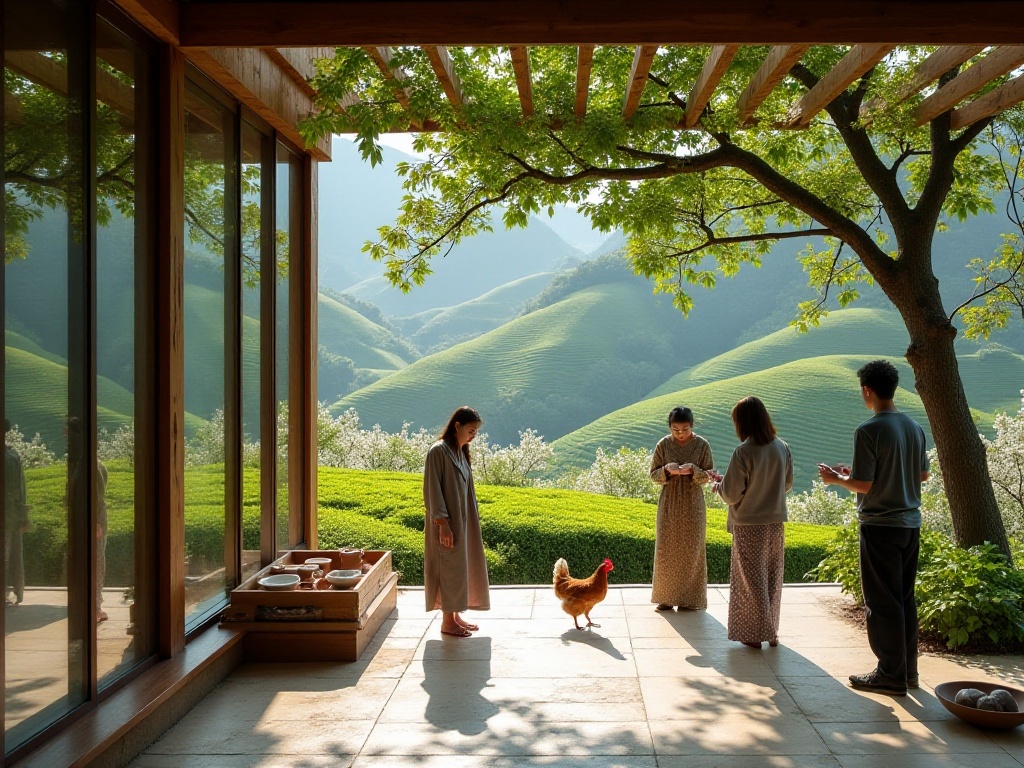
Introduction
Rural memories are always filled with warm images. An elderly grandfather sits in the courtyard weaving bamboo baskets, wisteria climbs the courtyard walls, and the air is fragrant with drying grain. As a child, visiting grandmother's house during summer vacation was the most anticipated event. Right after getting off the bus, you could see golden fields of sunflowers with butterflies dancing among the blooms. In the distant rice paddies, frogs croaked in chorus, occasionally joined by the mooing of cattle. These once-ordinary rural scenes have now become the "nostalgia" that urban dwellers eagerly seek. Today, rural tourism has evolved from simple family visits into a fashionable lifestyle.
What is Rural Tourism
Rural tourism has rich connotations. It includes not only familiar farmstays, pick-your-own farms, and guesthouses, but also encompasses rural creative culture, intangible heritage experiences, farming activities, and various other forms. Although simple, the definition given by the EU and OECD in 1994 captured the essence: "tourism activities that take place in rural areas." This definition emphasizes rurality as the core element, highlighting the key characteristic that distinguishes rural tourism from other forms.
Domestic academics have developed deeper research and understanding of rural tourism. Professors Du Jiang and Xiang Ping believe that rural tourism is a form of tourism that uses rural natural scenery, cultural landscapes, and farming activities as attractions to satisfy urbanites' multiple needs for returning to nature, experiencing rural life, and seeking cultural roots. This definition emphasizes the multifunctional nature of rural tourism, including not just sightseeing but also cultural experiences and spiritual fulfillment.
Professor Wang Bing defines rural tourism from an activity perspective as a comprehensive tourism activity that combines sightseeing, investigation, learning, participation, entertainment, shopping, and vacation functions. This definition highlights the composite nature of rural tourism, showing its evolution from simple sightseeing to a full-spectrum experience.
The content of modern rural tourism continues to expand. For example, some places have developed specialized agricultural product processing experiences where tourists can make jam, pickle vegetables, or bake bread by hand. Some locations have established farming culture classrooms where visitors can learn about traditional farming tools, crop growth processes, and seasonal farming activities according to the 24 solar terms. All these greatly enrich the content of rural tourism.
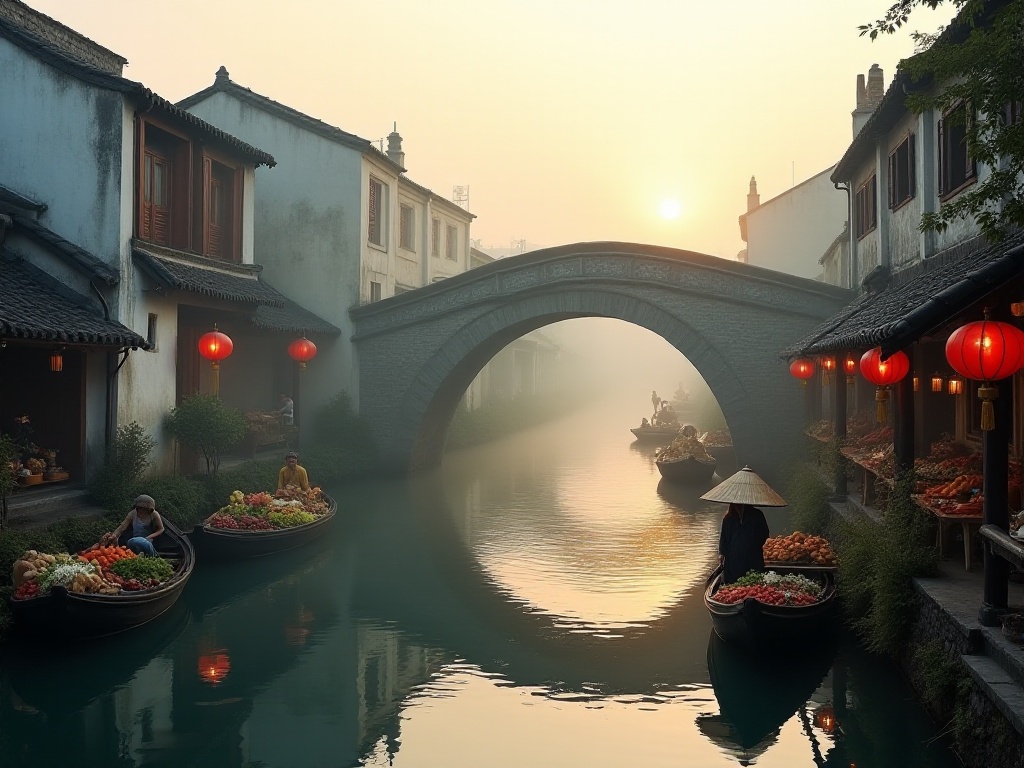
Three Key Characteristics
Rural tourism's growing attraction to visitors mainly stems from its unique charm, which can be summarized by three characteristics: rurality, participation, and diversity.
Rurality is the most fundamental characteristic. In fast-paced urban life, people increasingly yearn for peaceful rural living. Every weekend, city dwellers drive to the countryside seeking rare moments of leisure. In a small village in Deqing, Zhejiang, I saw tourists marveling at old items in farmhouse courtyards. Those farming tools we took for granted in childhood, like plows, carrying poles, and stone mills, have become novel photo opportunities for young people. Red peppers dried in a farmer's courtyard, when artfully arranged, became a social media hotspot attracting crowds of tourists daily for photos.
The natural rural environment is also a major highlight. In the morning, you can hear roosters crowing in the mist; in the evening, you can watch smoke rising from chimneys. These scenes, long vanished from cities, have become urban dwellers' poetic ideal. Some villages still maintain complete ecosystems, with crystal-clear streams, constant sounds of frogs and insects, and starry night skies. This pristine environment is exactly what urbanites yearn for.
Participation is rural tourism's second major characteristic. Modern rural tourism is no longer passive sightseeing but emphasizes visitors' personal involvement. At a farm in Kunshan, Jiangsu, I joined a farming experience activity. From planting rice seedlings to harvesting, from grinding soybeans to making tofu, each step revealed the wisdom of farming civilization. Though covered in mud, the sense of participation and achievement was priceless.
Some villages have developed specialty agricultural product-making experiences. In a village in Dali, Yunnan, visitors can learn tie-dye techniques from locals; in tea gardens in suburban Chengdu, Sichuan, visitors can pick tea leaves and experience the tea-making process. These activities not only provide visitors with unique experiences but also deepen their understanding of traditional crafts and farming culture.
Diversity is rural tourism's third major characteristic. China's vast territory encompasses varied geographical environments, climates, and ethnic cultures, creating rich and diverse rural tourism resources. Northern farmhouses offer warm kang bed-stoves in winter and specialty dishes like pickled vegetable stew with meat; Jiangnan water town residences are built along waterways with connecting corridors, displaying the refinement of Jiangnan gardens; terraced fields in southwestern mountains create spectacular views, especially beautiful during harvest season.
This diversity is also reflected in ethnic cultures. In Dai villages in Xishuangbanna, Yunnan, you can participate in Water-Splashing Festival celebrations; in Mongolian yurts in Inner Mongolia, you can experience the hospitality of grassland peoples; in Dong villages in Guizhou, you can listen to their grand songs. Each place has its unique folk culture, and this cultural diversity is a major attraction of rural tourism.
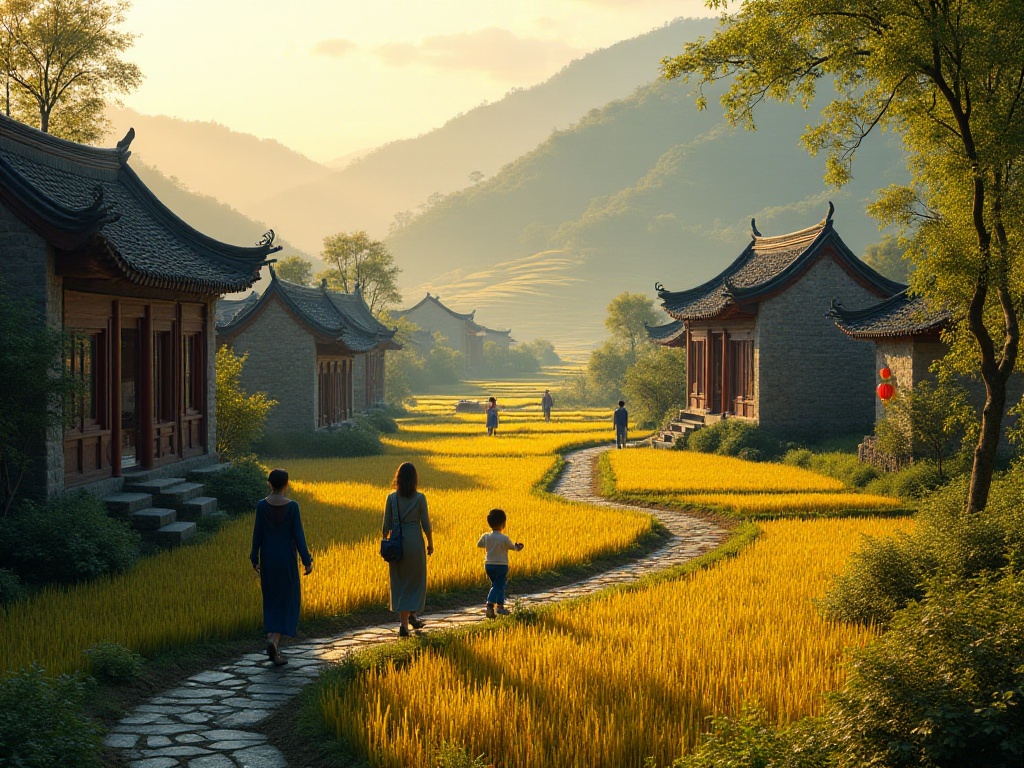
Four Tourism Styles
As rural tourism continues to develop, four main tourism models have emerged, each with its unique characteristics and charm.
The leisure farm model is the most traditional and widespread form. Farmers renovate their courtyards to provide accommodation and dining services, allowing visitors to experience authentic farm life. This model is characterized by its accessibility and affordability, making it popular with family tourists. Modern leisure farms no longer just provide basic food and lodging; many have added interactive activities like fruit picking, fishing, and farming experiences.
Some leisure farms have developed unique projects combining local characteristics. For example, a farm in Wuyuan, Jiangxi, not only preserved the features of Hui-style architecture but also planted its courtyard full of rapeseed flowers. When spring arrives, the golden flower sea creates a beautiful contrast with the white walls and black tiles, attracting numerous visitors. According to the Ministry of Agriculture and Rural Affairs, by 2023, the number of leisure farms nationwide exceeded 350,000, with annual visitor numbers surpassing 800 million, showing continuous industry growth.
The sightseeing farm model is a more modernized form of rural tourism. This model is well-established in European and American countries and has recently developed rapidly in China. Sightseeing farms are generally larger in scale, maintaining agricultural production functions while adding tourist facilities. Visitors can observe modern agricultural production processes and learn about advanced agricultural technology.
For example, a modern agricultural park in Kunshan, Jiangsu, covers over 2,000 mu and features smart greenhouses, vertical farming areas, and agricultural technology exhibitions. Visitors can see new farming techniques like hydroponics and aeroponics, and experience operating agricultural machinery. This educational entertainment approach is particularly popular with student groups. In 2023, the operating income of large-scale sightseeing farms nationwide increased by over 40% year-on-year, showing strong development momentum.
The ancient town tourism model develops rural tourism based on traditional towns' cultural landscapes and historical heritage. This model features rich cultural heritage and unique architecture, making it particularly popular among young art enthusiasts. Wuzhen in Zhejiang is a typical example, preserving many Ming and Qing dynasty buildings. The stone paths along rivers, black tiles, and weathered walls all tell stories of its long history.
Beyond sightseeing, ancient towns have developed rich cultural experience programs. Visitors can tour traditional workshops to learn about blue calico printing and wine brewing crafts; stay in renovated old houses to experience the town's slow lifestyle; and participate in various folk activities to experience local culture. In 2023, Wuzhen received over 10 million visitors with tourism revenue exceeding 5 billion yuan, fully demonstrating the market potential of ancient town tourism.
New village scenery tourism is an emerging rural tourism model. This model developed from the beautiful countryside construction initiative, attracting visitors through improved village appearance, upgraded infrastructure, and creation of distinctive landscapes. This model characteristically preserves original rural features while adding modern elements, achieving a perfect blend of tradition and modernity.
In a village in Anji, Zhejiang, beautiful countryside construction included building eco-friendly parking lots and viewing platforms, and converting abandoned old houses into creative parks. Cherry trees planted along main village roads create a pink and white flower sea during blossom season, attracting many visitors. Statistics show that in 2023, beautiful countryside demonstration villages saw a 65% year-on-year increase in visitors, showing strong development potential.
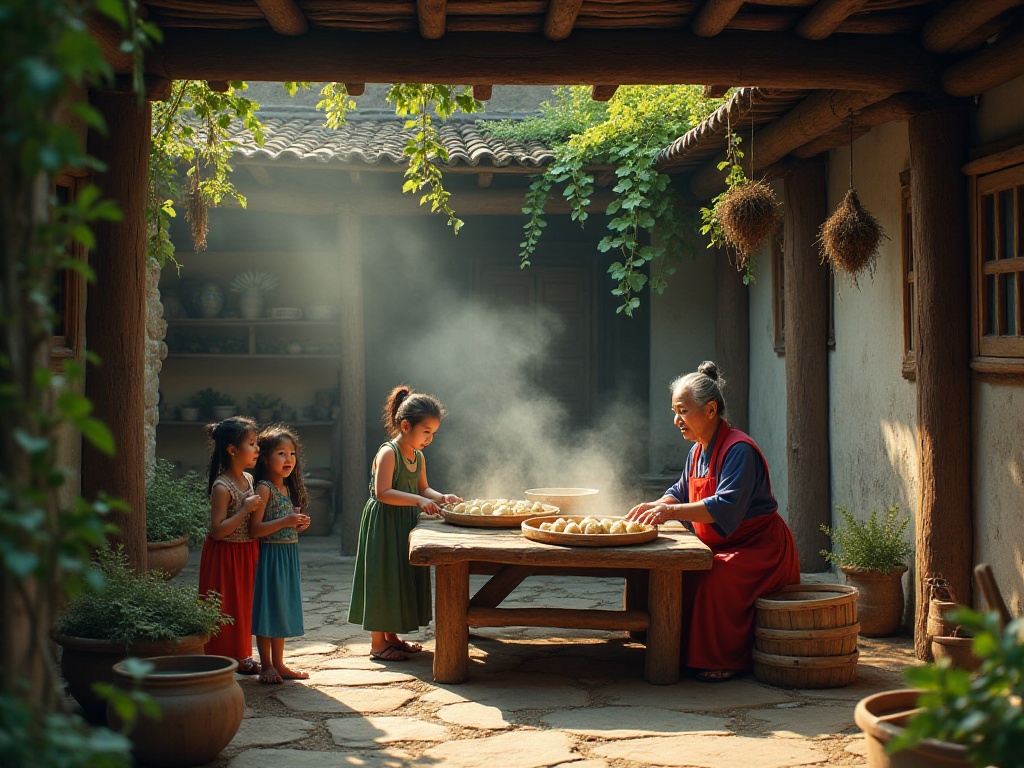
Development Trends
Rural tourism is undergoing profound transformation, evolving from simple accommodation and dining toward diversification and quality improvement, from pure sightseeing toward deep experience. This change is reflected in multiple aspects.
First is the improvement in accommodation conditions. Modern rural guesthouses are increasingly sophisticated in design, with many employing professional designers for planning. A guesthouse in Dali, Yunnan, maintains Bai ethnic architecture externally while adopting modern minimalist interior style, with specially designed viewing terraces for guests to enjoy Erhai Lake sunsets. Some guesthouses create themed rooms based on regional characteristics, such as using colorful carpets in Xinjiang guesthouses and incorporating garden elements in Jiangnan guesthouses, making the accommodation itself a cultural experience.
Second is innovation in experience programs. Traditional farming experiences no longer satisfy young visitors' needs, and many villages are introducing trendy elements. Camping is a good example, with many villages leveraging their natural environment advantages to establish camping sites equipped with tents and barbecue facilities. A village in suburban Chengdu, Sichuan, holds weekend camping music festivals that attract many young people.
Educational tourism has also become an important direction. Some villages cooperate with schools to develop study programs themed around farming culture, ecological environment, and intangible cultural heritage. In Wuyuan, Jiangxi, a village established a farming culture exhibition hall using physical displays and interactive experiences to help students understand traditional farming civilization.
Additionally, some emerging entertainment forms have been introduced to villages. For example, murder mystery games use old houses and ancient buildings as settings, designing locally themed scripts that let visitors learn about local history and culture while solving mysteries. E-sports have also appeared in villages, with some places building rural e-sports halls serving both local youth and urban visitors.
Data shows that in 2023, post-90s and post-00s generations accounted for over 45% of rural tourism participants. This figure indicates that rural tourism is attracting more young people. The consumption habits and aesthetic preferences of younger generations are also driving rural tourism's transformation and upgrade.
So, faced with such diverse forms of rural tourism, which do you prefer? Experiencing authentic farm life, visiting trending guesthouses, joining lively rural music festivals, or quietly experiencing traditional crafts? Feel free to share your thoughts in the comments.
Next
Hidden Gems in Rural Vietnam: Rediscovering Serenity Post-Pandemic
As the world emerges from the cocoon of lockdowns, Vietnam's countryside unfurls its wings, revealing a kaleidoscope of hidden treasures. The pandemic's pause has birthed a new era of travel, one that whispers of untrodden paths and authentic encounters. Rural Vietnam, once the backdrop to frenetic city escapes, now takes center stage in a renaissance of rustic allure.
In-Depth Exploration: 10 Hidden Rural Tourism Destinations in Europe Worth Experiencing in 2024, Making Your Travel Unique
A comprehensive overview of global rural tourism destinations, featuring distinctive villages and countryside locations across Europe, North America, and Asia. Explores diverse accommodation options and outdoor activities from Serbia's Zlatibor to Hokkaido, Japan
The Ozark Mountains: A Forgotten Outdoor Paradise in South-Central USA, A Sanctuary Where City Dwellers Can Find Inner Peace
Explore diverse rural tourism destinations worldwide, featuring unique experiences from Native American culture in the US South to traditional villages in Eastern Europe and natural landscapes in Asia-Pacific, highlighting authentic cultural encounters and sustainable travel
Next
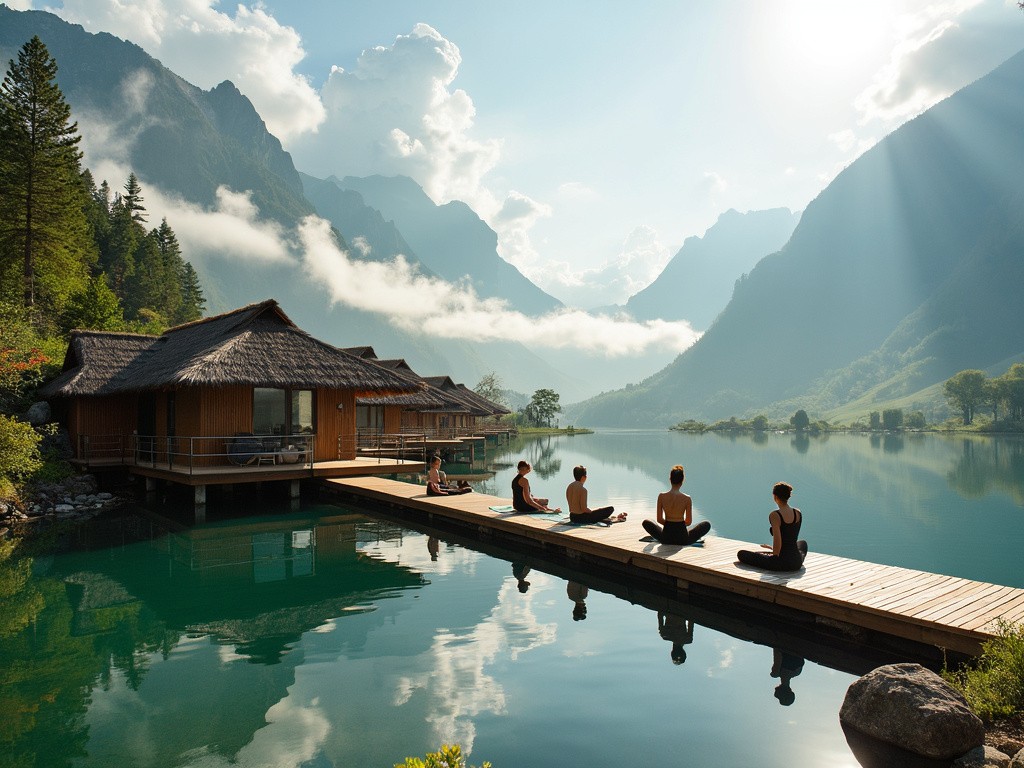
Hidden Gems in Rural Vietnam: Rediscovering Serenity Post-Pandemic
As the world emerges from the cocoon of lockdowns, Vietnam's countryside unfurls its wings, revealing a kaleidoscope of hidden treasures. The pandemic's pause has birthed a new era of travel, one that whispers of untrodden paths and authentic encounters. Rural Vietnam, once the backdrop to frenetic city escapes, now takes center stage in a renaissance of rustic allure.
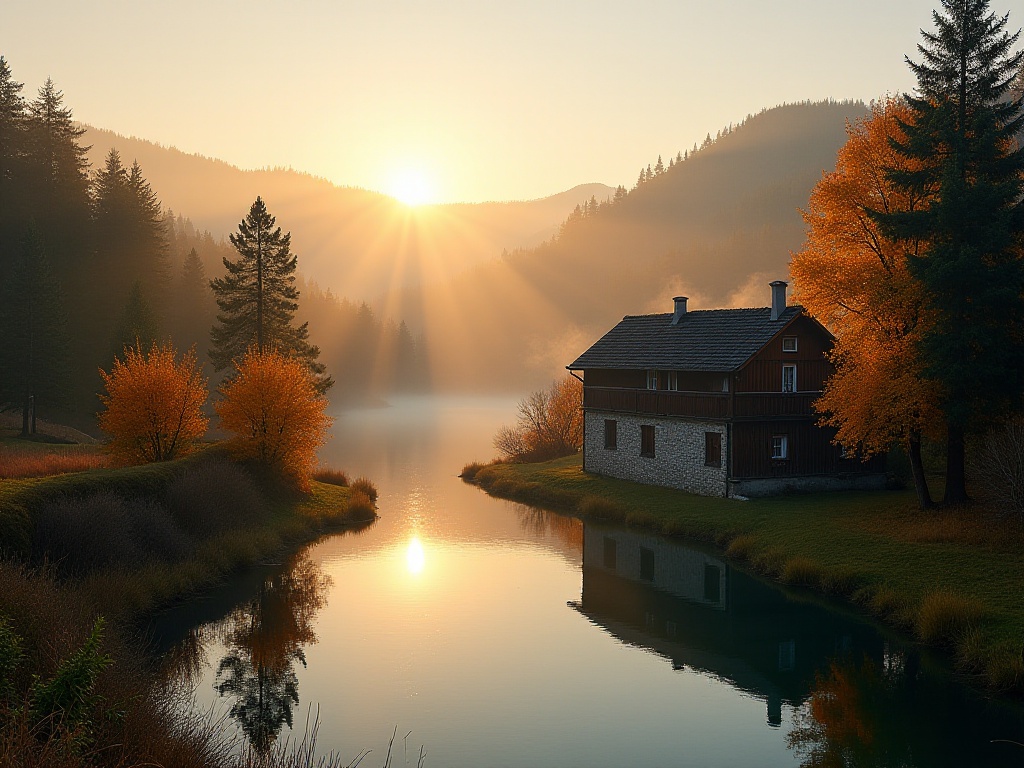
In-Depth Exploration: 10 Hidden Rural Tourism Destinations in Europe Worth Experiencing in 2024, Making Your Travel Unique
A comprehensive overview of global rural tourism destinations, featuring distinctive villages and countryside locations across Europe, North America, and Asia. Explores diverse accommodation options and outdoor activities from Serbia's Zlatibor to Hokkaido, Japan
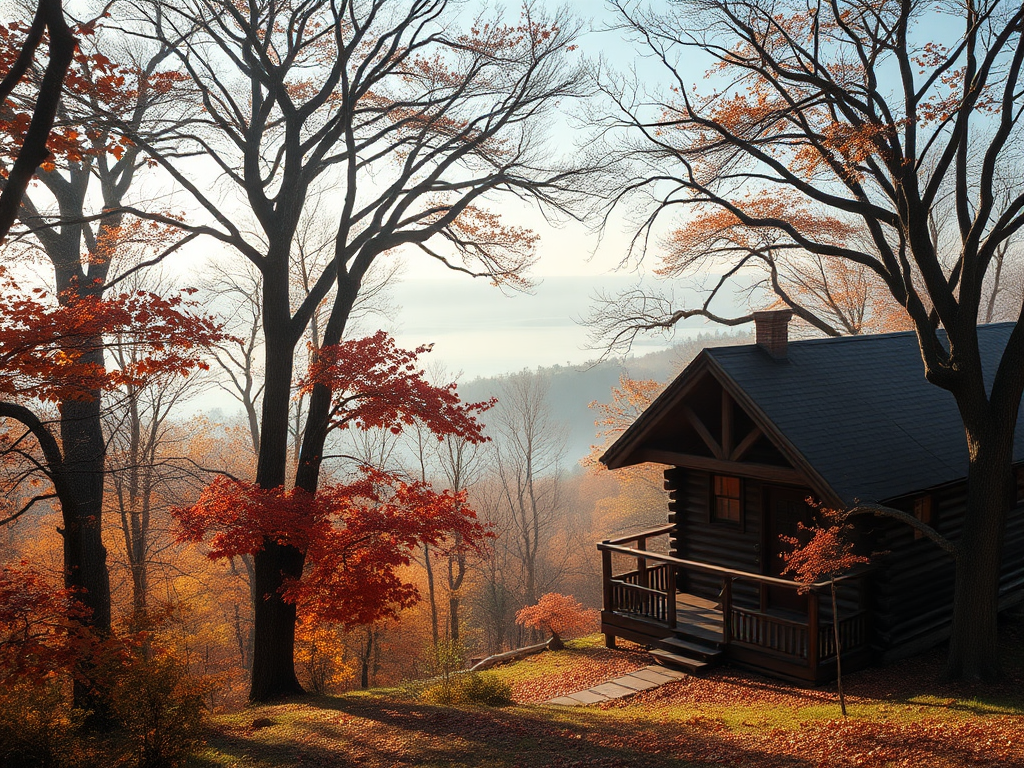
The Ozark Mountains: A Forgotten Outdoor Paradise in South-Central USA, A Sanctuary Where City Dwellers Can Find Inner Peace
Explore diverse rural tourism destinations worldwide, featuring unique experiences from Native American culture in the US South to traditional villages in Eastern Europe and natural landscapes in Asia-Pacific, highlighting authentic cultural encounters and sustainable travel

